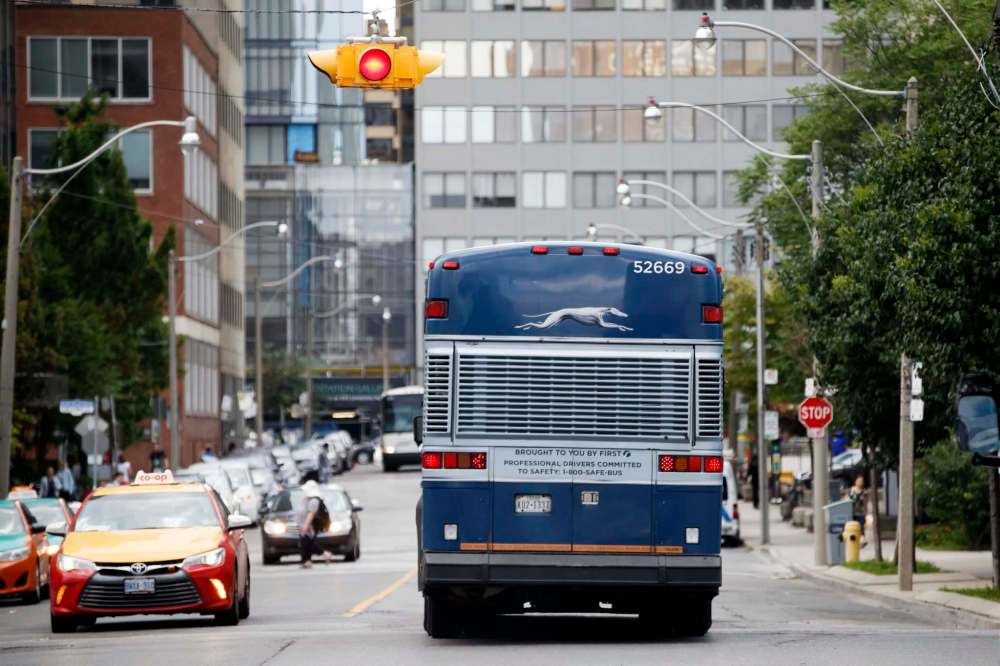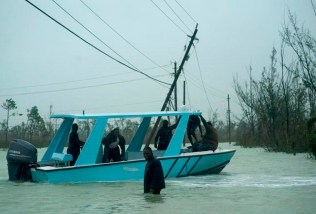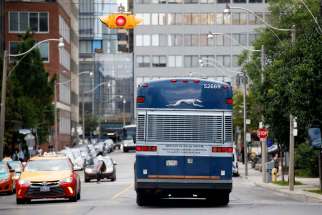Restoring bus service must be post-election priority
Read this article for free:
or
Already have an account? Log in here »
To continue reading, please subscribe:
Monthly Digital Subscription
$0 for the first 4 weeks*
- Enjoy unlimited reading on winnipegfreepress.com
- Read the E-Edition, our digital replica newspaper
- Access News Break, our award-winning app
- Play interactive puzzles
*No charge for 4 weeks then price increases to the regular rate of $19.00 plus GST every four weeks. Offer available to new and qualified returning subscribers only. Cancel any time.
Monthly Digital Subscription
$4.75/week*
- Enjoy unlimited reading on winnipegfreepress.com
- Read the E-Edition, our digital replica newspaper
- Access News Break, our award-winning app
- Play interactive puzzles
*Billed as $19 plus GST every four weeks. Cancel any time.
To continue reading, please subscribe:
Add Free Press access to your Brandon Sun subscription for only an additional
$1 for the first 4 weeks*
*Your next subscription payment will increase by $1.00 and you will be charged $16.99 plus GST for four weeks. After four weeks, your payment will increase to $23.99 plus GST every four weeks.
Read unlimited articles for free today:
or
Already have an account? Log in here »
Hey there, time traveller!
This article was published 04/09/2019 (2290 days ago), so information in it may no longer be current.
It’s alarming to see people hitchhiking on Manitoba highways, particularly given this province’s distressingly long list of women who have been assaulted and slain after accepting rides from strangers. But for some, there isn’t a safer choice when their budget doesn’t allow a private vehicle or airfare.
Buses used to offer a relatively affordable transportation option, but since Greyhound pulled out of Western Canada 10 months ago, people in many Manitoba communities have been stranded without regular and reliable mass transportation.
Governments should be responsible for providing “secure transportation options” for women, girls and LGBTTQ+ individuals living in remote communities, according to the final report of the National Inquiry into Missing and Murdered Indigenous Women and Girls.

After Greyhound’s service reductions, the federal government offered $10 million in temporary 50-50 cost-shared funding to the affected provinces. Regrettably, Manitoba declined the cost-sharing offer, which was accepted by British Columbia. Then-Manitoba infrastructure minister Ron Schuler said last February the province wasn’t interested in “subsidizing private industry.”
Leaving the private sector to fill the gap in post-Greyhound bus service in Manitoba simply hasn’t worked. Bus service connecting communities through the far-flung reaches of the province has been unreliable or non-existent in many places, proving to be a hardship for people who need to travel for education, health treatment, business or social visiting.
At least six different entrepreneurial-minded transportation companies tried to fill the routes Greyhound abandoned, but found they couldn’t cover their expenses while serving remote communities. As a result, many routes have been dropped.
Gillam lost its service to the province’s northern hub two weeks ago. There is no bus route directly connecting The Pas and Thompson. A Selkirk-Winnipeg commuter line ended Aug. 20. No operator is ready to service communities such as Steinbach, Carman and Gimli.
The network of buses in Manitoba is an unreliable patchwork. And that’s not good enough for what could fairly be described as an essential service, particularly for people in remote communities.
That’s not to say there haven’t been successes when private operators seized on innovative options, such as supplementing scant passenger traffic with the transportation of freight, charters and sports teams.
Bus service connecting Thompson and The Pas is expected to return this month thanks to a company called Mahihkan, which is owned by six First Nations. They plan to build a central hub near the junction of highways 6 and 60, so people will be able to transfer among its three routes.
But overall, the network of buses in Manitoba is an unreliable patchwork. And that’s not good enough for what could fairly be described as an essential service, particularly for people in remote communities.
The designation of intercity bus transport as an essential service, and the resulting obligation of government to help out, can be compared to rail service to the northern Manitoba town of Churchill. That vital link only resumed after the federal government spent $117 million to help repair the flood-damaged rail line.
This issue should be near the top of the to-do list that will await Manitoba’s new provincial government after the Sept. 10 election. The province should explore whether the federal government is still offering the 50-50 split of bus subsidy grants, which Manitoba declined. Government funds should be used to encourage, not replace, the well-intended entrepreneurial efforts that are currently underway.
In a province as large as Manitoba, bus service is a lifeline connecting communities, and its restoration is essential. For any provincial government, that’s where the rubber meets the road.










